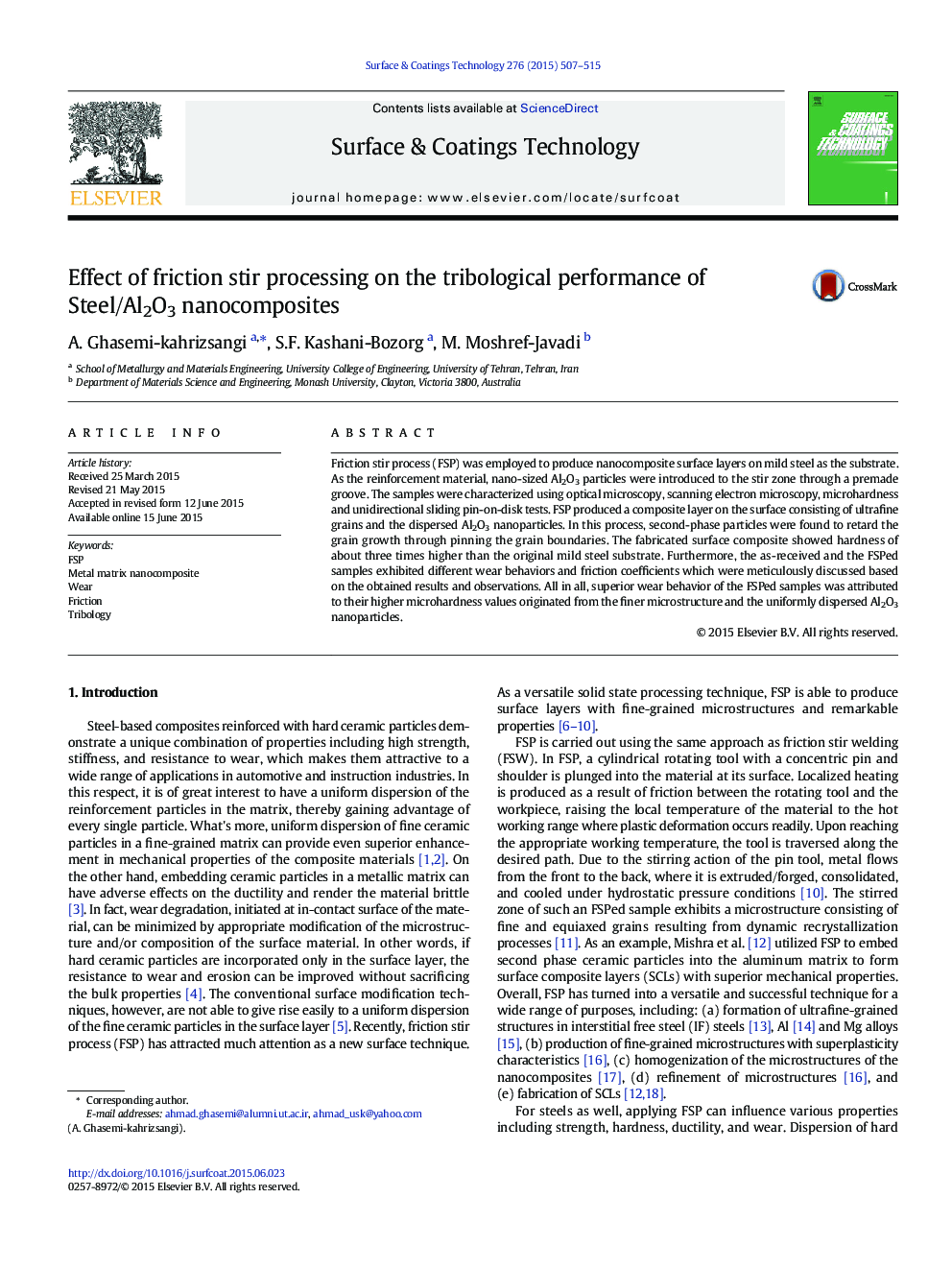| Article ID | Journal | Published Year | Pages | File Type |
|---|---|---|---|---|
| 1657010 | Surface and Coatings Technology | 2015 | 9 Pages |
•Steel/Al2O3 nanocomposites were successfully fabricated using FSP.•Nano-sized Al2O3 was dispersed after four passes by breaking-up of Al2O3 clusters.•Nanocomposites exhibited a matrix of ultra-fine dynamically restorated grains.•Hardness and wear resistance were improved about three times using four FSP passes.•Nanocomposites and the as-received samples showed distinct wear mechanisms.
Friction stir process (FSP) was employed to produce nanocomposite surface layers on mild steel as the substrate. As the reinforcement material, nano-sized Al2O3 particles were introduced to the stir zone through a premade groove. The samples were characterized using optical microscopy, scanning electron microscopy, microhardness and unidirectional sliding pin-on-disk tests. FSP produced a composite layer on the surface consisting of ultrafine grains and the dispersed Al2O3 nanoparticles. In this process, second-phase particles were found to retard the grain growth through pinning the grain boundaries. The fabricated surface composite showed hardness of about three times higher than the original mild steel substrate. Furthermore, the as-received and the FSPed samples exhibited different wear behaviors and friction coefficients which were meticulously discussed based on the obtained results and observations. All in all, superior wear behavior of the FSPed samples was attributed to their higher microhardness values originated from the finer microstructure and the uniformly dispersed Al2O3 nanoparticles.
